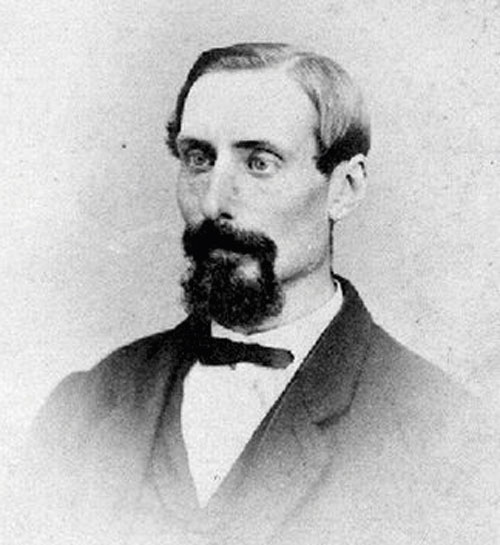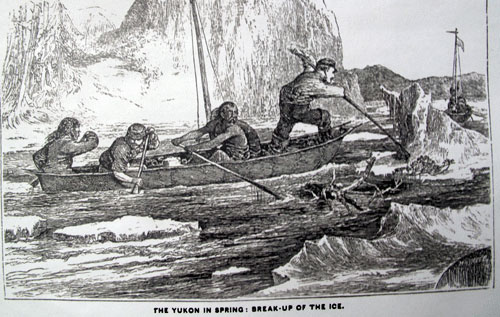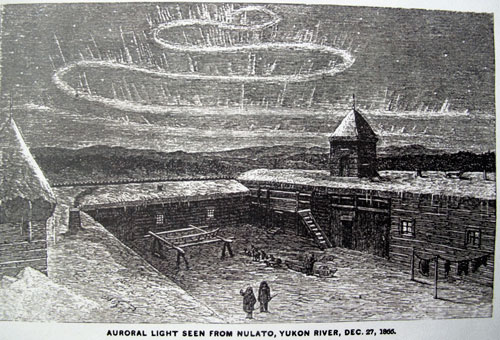
Way back when, artist believed Alaska was a good dealBy NED ROZELL
July 15, 2018
Among them was Frederick Whymper, an adventurous English artist who had signed on to help document a telegraph project across North America. In his book “Travel and Adventure in the Territory of Alaska,” he left behind some insights about what America was getting itself into.
In his 20s, Whymper left what must have been a comfortable life in London to travel to British Columbia, where he gained the position of artist on the Vancouver Island Exploring Expedition. That experience may have whetted his appetite for wild and uncomfortable, because he soon became the artist for the Russian-American Telegraph Project. His job was to document an attempt to string a wire from San Francisco to Moscow. Though the successful laying of a sea-floor cable between Ireland and Newfoundland killed the telegraph project while Whymper was in Alaska, he and the others had a fine tour up and down the Yukon, and his are among the most detailed descriptions of the time when Alaska became part of America. The Natives of both Alaska’s coast and Interior fascinated Whymper as he wrote of the isolated “perfection” of the aboriginal people here. Here, he describes Interior Natives catching salmon on the middle Yukon River: “We saw the very pretty sight of a whole fleet of birch bark (canoes), proceeding together as regularly as a company of soldiers. At a given signal the owners of each dipped his round hand-net into the water, and if, on raising it, a big salmon came up struggling to get away, there was a general shout,” he wrote. “I saw so much harmless fun and amusement among these Indians, and they evidently find so much enjoyment in hunting and fishing, that I could only wish they might never see much of the white man, and never learn the baneful habit and custom he is sure to introduce.”
The size of the Yukon River, which Whymper and his comrades ascended to Fort Yukon before turning around and floating all the way to the mouth, was another lasting impression. “How shall I, in few words, describe this immense stream, one that our men were wont to compare with the Mississippi! At Nulato, which is 600 miles above its mouth, it is, from bank to bank, one mile and a quarter wide … Its tributaries … would be large rivers in Europe, and I can therefore understand the proud boast uttered by a native of its banks, and translated for our benefit, ‘We are not savages, we are Yukon Indians!’” A chief part of Whymper and his party’s diet was salmon, which was then plentiful from San Francisco northward. “Salmon is the commonest of common fish in all the rivers of the North Pacific, and is rated accordingly as food only fit for those who can not get better,” Whymper wrote. “The Yukon salmon is by no means to be despised. One large variety is so rich that there is no necessity, when frying it, to put fat in the pan.”
At the end of his year in the brand-new acquisition of Alaska, Whymper thought the purchase was a good move by the U.S. He also believed that it was only the beginning: “The extreme northern division of the country may, indeed, be nearly valueless, but … in the more central portions of the territory, furs are abundant … The southern parts of the country are identical in character with the neighboring British territory, and will probably be found to be as rich in mineral wealth; while the timber, though of an inferior growth, owing to a higher latitude, will yet prove by no means worthless … The fisheries may become of great value. “There are, however, many, both in England and America, who look on this purchase as the first move toward an American occupation of the whole continent, and who foresee that Canada … will sooner or later become part of the United States. “It is the destiny of the United States to possess the whole northern continent, I fully believe.”
Representations of fact and opinions in comments posted are solely those of the individual posters and do not represent the opinions of Sitnews.
|
||||||


